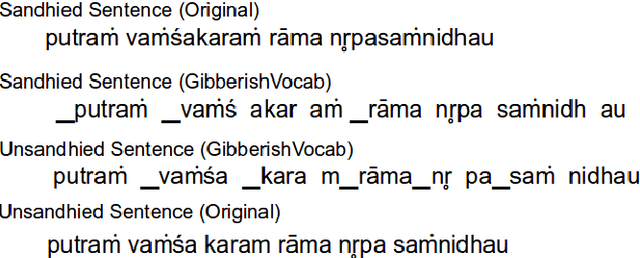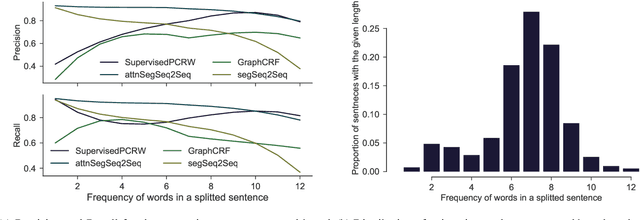Building a Word Segmenter for Sanskrit Overnight
Paper and Code
Feb 17, 2018


There is an abundance of digitised texts available in Sanskrit. However, the word segmentation task in such texts are challenging due to the issue of 'Sandhi'. In Sandhi, words in a sentence often fuse together to form a single chunk of text, where the word delimiter vanishes and sounds at the word boundaries undergo transformations, which is also reflected in the written text. Here, we propose an approach that uses a deep sequence to sequence (seq2seq) model that takes only the sandhied string as the input and predicts the unsandhied string. The state of the art models are linguistically involved and have external dependencies for the lexical and morphological analysis of the input. Our model can be trained "overnight" and be used for production. In spite of the knowledge lean approach, our system preforms better than the current state of the art by gaining a percentage increase of 16.79 % than the current state of the art.
 Add to Chrome
Add to Chrome Add to Firefox
Add to Firefox Add to Edge
Add to Edge